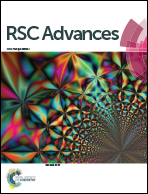Mixing thermodynamics and electronic structure of the Pt1−xNix (0 ≤ x ≤ 1) bimetallic alloy
Abstract
The development of affordable bifunctional platinum alloys as electrode materials for the oxygen reduction reaction (ORR) and oxygen evolution reaction (OER) remains one of the biggest challenges for the transition towards renewable energy sources. Yet, there is very little information on the optimal ratio between platinum and the transition metal used in the alloy and its impact on the electronic properties. Here, we have employed spin-polarised density functional simulations with long-range dispersion corrections [DFT–D3–(BJ)], to investigate the thermodynamics of mixing, as well as the electronic and magnetic properties of the Pt1−xNix solid solution. The Ni incorporation is an exothermic process and the alloy composition Pt0.5Ni0.5 is the most thermodynamically stable. The Pt0.5Ni0.5 solid solution is highly ordered as it is composed mainly of two symmetrically inequivalent configurations of homogeneously distributed atoms. We have obtained the atomic projections of the electronic density of states and band structure, showing that the Pt0.5Ni0.5 alloy has metallic character. The suitable electronic properties of the thermodynamically stable Pt0.5Ni0.5 solid solution shows promise as a sustainable catalyst for future regenerative fuel cells.



 Please wait while we load your content...
Please wait while we load your content...